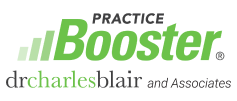One of the most popular features of a Practice Booster Online subscription is dental coding and administration support with Practice Booster Advisors. Here is a recent question, from a valued Practice Booster subscriber, that we wanted to share as our dental coding tip of the month.
Dental coding question:
I recently received an EOB from an insurer for osseous surgery for a patient. I submitted D4261 + D4263 + D4265 + D4266. The EOB came back $0 for the amount allowed and also showed no liability for the patient, saying payment is included in the allowance for another service/procedure.
I don’t know what they are referring to since it is necessary to submit all 4 codes as the gold standard of care.
Can you advise me? Do I need to file an appeal?
Practice Booster Advisor:
You submitted for
D4261 OSSEOUS SURGERY (INCLUDING ELEVATION OF A FULL THICKNESS FLAP AND CLOSURE) – ONE TO THREE CONTIGUOUS TEETH OR TOOTH BOUNDED SPACES PER QUADRANT
D4263 BONE REPLACEMENT GRAFT – RETAINED NATURAL TOOTH- FIRST SITE IN QUADRANT
D4265 BIOLOGIC MATERIALS TO AID IN SOFT AND OSSEOUS TISSUE REGENERATION, PER SITE
D4266 GUIDED TISSUE REGENERATION, NATURAL TEETH – RESORBABLE BARRIER, PER SITE
That combination of codes is perfectly valid, so it is not a dental coding issue. Osseous surgery can absolutely be done in conjunction with a bone graft, biologic materials, and a resorbable barrier. Biologic materials are frequently not reimbursed, but no reason the other should not have coverage unless excluded by the plan or there was a missing step or documentation.
Osseous surgery generally requires periodontal scaling and root planing with a subsequent four to six-week period for evaluation or a continuous period of periodontal maintenance before the osseous surgery is reimbursable. If the osseous surgery itself is not considered reimbursable, the associated procedures would not be reimbursed either. It is possible this is the case.
In addition, comprehensive periodontal charting showing pocket depths of 5mm or more on each tooth to be treated, radiographic evidence of severe and/or irregular bone loss, evidence of furcation involvement and clinical notes may be required to justify reimbursement for osseous surgery. Payers may limit osseous surgery to once every 24 to 36 months. Payers may consider the fee reimbursed for D4261 to include scaling and root planing when the SRP is performed within four weeks of osseous surgery. Payers may consider any osseous contouring, distal or proximal wedge surgery, frenectomy, soft tissue grafts, gingivectomy, and/or flap procedures performed in the same quadrant on the same date as the osseous surgery as a part of the osseous surgery.
When multiple periodontal procedures are reported on the same service date, the highest UCR fee (most inclusive) may be the only procedure reimbursed. The other, less costly procedures are often considered a part of the more comprehensive procedure, or these other procedures may be reimbursed at a lower-than-usual fee. This is plan-dependent.
I hope this gives you some guidance. If you would like us to look at the actual EOB to see if we can determine anything further, please attach and return it to us. Otherwise, you ALWAYS have the ability to appeal, but if some basic plan stipulation is not being met, they will continue to deny the claim. Read the EOB fully and appeal with whatever you feel meets their requirements.

0 Comments